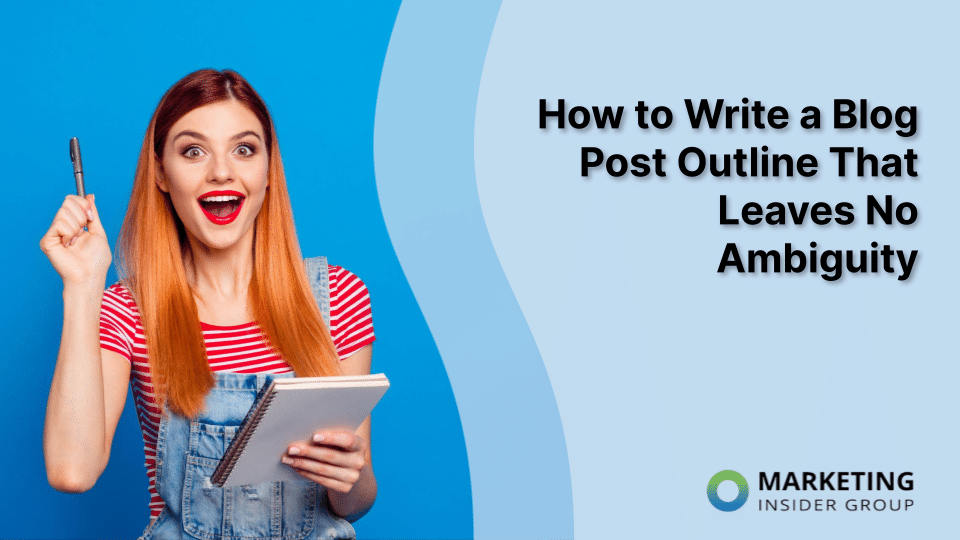
How to Write a Content Marketing Plan that Quadruples Your Leads
Looking for more leads? It might be easier than you think. A well-thought-out B2B content marketing strategy can make a huge difference.
There’s a ton of ways to drum up leads online, but let’s not beat around the bush: Content marketing needs to be a big player in your game plan. Not only is it nice to your wallet, but it’s also extremely effective and fits snugly with other digital marketing tactics.
But first, you need to have a plan in place. A shocking 63% of businesses are running without a documented content strategy. Don’t be one of them. If you’re just stepping into the content marketing arena and want to see your efforts pay off in a big way with leads, this guide is your go-to for crafting a top-notch content marketing plan.
Quick Takeaways
- High-quality content marketing is crucial for earning audience trust and converting them into leads.
- Effective SEO is essential for making content discoverable and driving leads, with 53% of website traffic coming from organic search.
- Keyword research is key in content marketing, helping to create relevant content that answers audience queries and sets the structure for articles.
- Regular publishing of quality content and ongoing analysis are vital for engaging the audience and optimizing content performance for better lead generation.
Understanding the Impact of Content Marketing on Lead Generation
High quality content is the ace in your marketing deck. At Marketing Insider Group, we’ve seen firsthand how a well-crafted content marketing strategy can be a game-changer in generating leads.
First off, content marketing isn’t just about filling your website with articles. It’s about creating value. When your content answers the burning questions of your audience or solves their problems, you’re earning their trust. And in the marketing world, trust is the currency that buys leads.
Think about it. Every informative blog post, every insightful article, and every helpful guide you publish is an opportunity to showcase your expertise. This approach not only attracts visitors, but also converts them into leads. Why? Because they start seeing you as a go-to resource and thought leader in your field.
You just have to remember, content marketing isn’t a one-and-done deal. It’s about consistency. Regularly publishing top-notch content keeps your audience engaged and coming back for more. It’s like laying breadcrumbs that lead straight to your services or products.
The more consistent and valuable your content is, the more leads you’re likely to generate. In fact, content marketing costs 62% less than traditional marketing and generates about three times as many leads.

Image source: Demand Metric
Moral of the story: Content marketing is a powerful tool in your lead generation arsenal. It’s about building relationships, establishing authority, and providing value. Do it right, and you’ll see your leads not just grow, but flourish.
The Role of SEO in Content Marketing for Lead Generation
SEO is the unsung hero working behind the scenes of content marketing. It’s what makes your content discoverable, driving leads right to your doorstep.
Think about it: 53% of all trackable website traffic comes from organic search. This statistic alone underscores the vital role of SEO in guiding potential leads to your content.

Image Source: Adam Connell
When your content ranks high on search engines, it’s not just visible; it becomes the go-to solution for your audience’s needs.
SEO in content marketing is about crafting content that speaks the language of both your audience and search engines. It’s a delicate balance of:
- Using the right keywords
- Creating user-friendly content
- Making sure your website is technically sound
Remember, if your content isn’t optimized for search engines, it’s like having a billboard in the desert; impressive, but hardly seen.
Effective SEO leads to higher visibility, which in turn increases the chances of your content being shared, linked to, and ultimately driving leads. In essence, SEO turns your content into a lead magnet, attracting potential customers organically and consistently.
A Strategic Approach to Lead Generation with Content Marketing
In content marketing, every detail counts. At Marketing Insider Group, we’ve curated a strategy that turns content into leads. It starts with smart keyword research and ends with meticulous optimization.
1. Keyword Research
Thankfully, we’ve come a long way from keyword-stuffed articles written specifically to rank highly in Google. Search engines have become more sophisticated and employ complex algorithms as well as human agents to judge each page for its relevance and user experience.
Despite this, keyword research should still be an integral part of your content marketing plan. This helps you to figure out what your audience is actually searching for, so you can create content to meet that need.
Keyword research can get very technical, but it’s best not to get too bogged down in the complexities of competition and search volume – you can leave that to the SEOs. Instead, use your research to help you to come up with content ideas, outlines, and article titles.
You’ll often find a group of related keywords together, and you can use these to essentially set out the subheadings for your content. This not only helps you to structure your content, but it also means that you’re providing your audience with comprehensive information, so they don’t have to go and look elsewhere.
To streamline this process, using keyword research tools, like SEMrush Keyword Magic, can be a huge help. They simplify finding the right keywords by offering a vast database and insightful metrics, making it easier to identify high-potential keywords and understand user intent.

Image Source: SEMrush
With tools like these, you can efficiently tailor your content to what your audience is searching for, ensuring your efforts are both targeted and effective.
2. Content Goals
Each piece of content you produce should have a specific goal. In some cases, you might have more than one goal. Some examples of goals might include:
- Establish authority in your niche
- Build brand awareness and trust
- Convert readers into mailing list signups
- Convert readers into sales
- Attracting social media shares

Image source: Pepper Content
By keeping these goals in mind when you create your content, you have a better chance of achieving them. For example, if you want the reader to sign up for your newsletter after reading your blog post, you’ll need to mention the benefits of doing so and make sure there are clear CTAs in the article.
3. Content Outline
When you have an article title in mind, don’t just sit down and start writing or send it off to your writer without any further thought. To maximize your content effectiveness, it’s important to plan each piece carefully. This means taking a few minutes to create an outline that can be used to form the basis of a full piece of content.
You can use your keyword research to create the structure of your outline, as discussed above. Your outline should also include your content goals, the format of your content, internal links to include, the target audience, and how you will promote it.
It’s helpful to decide on a few standard formats for your written content. This helps to standardize your style and makes your content production more efficient. Some ideas for content formats might include:
- Long-form pillar articles
- Step-by-step guides
- Roundup article or lists
- Thought leadership pieces
- Short news pieces
- Case studies
The exact formats you choose will depend on your industry and your individual organization. It can be helpful to research and see what sort of content your competitors are publishing to get not only content ideas, but also format ideas.

Image Source: Content Marketing Institute
4. Publication and Promotion Schedule
Once you’ve planned and outlined a few months’ worth of content, you should schedule it. To build a loyal reader base, you must publish consistently, so decide on a publication frequency depending on the resources you have available and the type of content you will be producing.
This could be daily, weekly, or monthly. Although you’re likely to see quicker results from more frequent content publication, it’s better to put out high-quality content consistently than to fill your site with lots of low-quality blog posts.
If any of your planned topics are seasonal or related to product launches, marketing campaigns, or other specific dates that are important in your business, make sure you schedule them accordingly. Your editorial calendar should include dates for:
- Content production
- Editing
- Publication
- Promotion
Make sure you allow slack time for deadlines running late and unforeseen events.
If you’re promoting your content by email or social media, it’s important to choose the best times to post for the highest engagement. There is plenty of research into this you can use as guidance, but you should also experiment with your own audience to find the best times. You can also use automated tools to schedule content in advance at the optimal times for each platform.
To make the most out of social media you can promote one piece of content several times, so be sure to factor this into your plan. Your followers will get annoyed if they keep seeing links to the same article, but make sure to promote your old content as well as your most recent pieces.
Need help creating your content calendar? Learn how to make one you’ll actually use. No time? Ask ChatGPT to do it for you!
Video Source: Jayant Padhi
5. Analysis and Optimization
After your content is published and promoted, that doesn’t mean you can tick it off the list and be done with it. The final step in your content marketing plan is really not a final step as it’s ongoing. Continuous analysis and improvement of your content over time will make sure it’s evolving with your audience and industry and help to inform your future content strategy.
Set a regular schedule for reviewing your analytics and seeing which content is performing and which isn’t. If one piece of content is producing quadruple the leads, try and figure out why that is so you can replicate it.
Always take the time to go back to edit and update older content. This takes a fraction of the time of producing a new piece of content, but it can dramatically increase content performance. Make sure you factor the time for this updating and optimization into your content marketing plan.
Maximize Leads with Content Marketing Today
Content marketing for lead generation is an approach that intertwines with every aspect of your digital presence. From the initial stages of keyword research to the continuous process of analysis and optimization, each step is crucial in building a bridge between your content and your audience.
By focusing on creating value, establishing trust, and optimizing for search engines, you’re not just reaching out to potential leads – you’re inviting them into a journey with your brand. The power of content marketing lies in its ability to connect, engage, and convert, making it an indispensable tool in your marketing arsenal.
Ready to reap the benefits of content marketing for lead generation? Check out our SEO Blog Writing Service or schedule a quick consultation to learn more about how Marketing Insider Group can help you earn more leads for your business.






